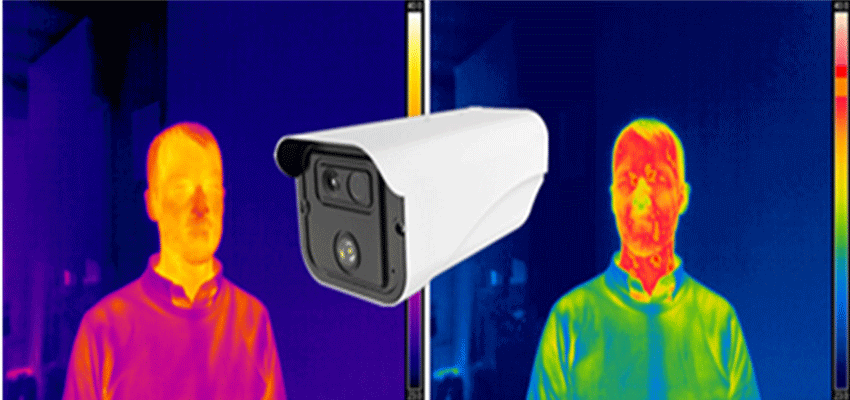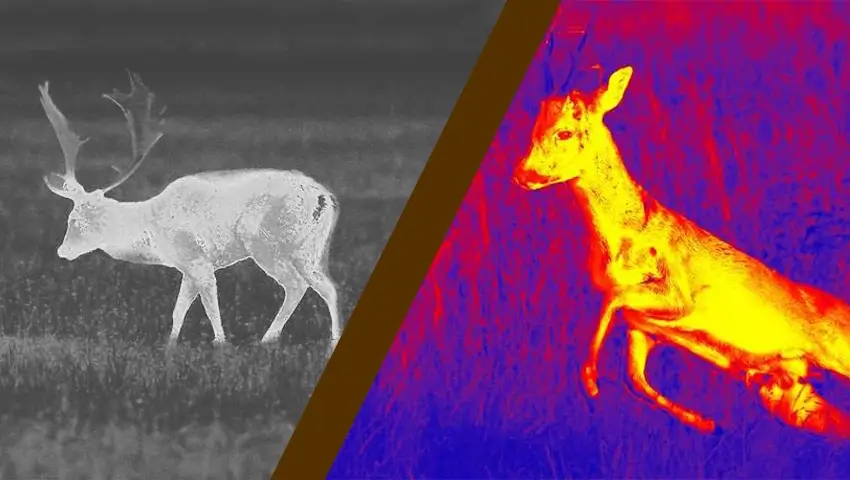At present, the COVID-19 epidemic is happening, and the public places are crowded, which is the high incidence period of virus infection. Thermal camera body temperature monitoring can be seen in many airports, docks, railway stations, passenger stations, and other places, and the tools used are mostly thermal imaging-related equipment.
ZOSI thermal camera uses thermal imaging technology is to collect the infrared electromagnetic wave emitted by the object, convert the infrared signal into an electrical signal, and then display the radiation energy (i.e. temperature) through different gray levels through the signal processing system. The different gray levels represent different temperatures, so as to calculate the temperature of the object, and output the pseudo color image which is easy to be recognized by the naked eye.
In this way, the thermal imaging camera can solve the problem that the traditional temperature measurement needs close contact of personnel, realize non-contact temperature measurement, and reduce the risk of cross-infection.
Contents
Is thermography accurate for body temperature screening? Is it harmful to the human body?
In this regard, many people have raised questions about the infrared thermal imager used for body temperature detection, “is it harmful to the human body”, “why is it used for body temperature screening in airports, railway stations, etc.”, “the industrial standard of thermal imager allows a temperature difference of plus or minus 2 ℃ within 100 ℃, and is it accurate for screening body temperature?”.
For the above questions, ZOSI thermal imaging technology has answered them one by one.
The temperature measurement principle of the thermal imager is to passively receive the infrared radiation from the object for imaging and temperature measurement, and all objects that exceed absolute zero (- 273.15 ℃) will emit infrared radiation.
Airport, railway station, and other places, why use infrared thermal imager for body temperature screening?
The infrared thermal imager is a non-contact temperature measurement device, which can be measured only when people appear in the thermal camera lens. Moreover, the thermal imager has a fast response speed and can measure all temperatures in a large range at the same time. In places with huge traffic such as airports and railway stations, it is very efficient to use thermal imagers to screen the temperature of passengers.
The industry standard for thermal imagers allows a temperature difference of plus or minus 2 degrees Celsius within 100 degrees Celsius. Is it accurate for screening body temperature?
Some people doubt the use of thermal imagers for body temperature screening. The reason is that the industry standard for temperature measurement accuracy of thermal imagers is plus or minus 2 degrees centigrade within 100 degrees Celsius, so it is not sure how to distinguish whether or not there is a fever.
In fact, the thermal imager is still very accurate in measuring body temperature, and the error is generally only a few degrees centigrade.
Moreover, as a screening, it does not need to measure temperature accurately, and it also needs the stability of continuous temperature measurement and the consistency of temperature measurement. Imagine that if the body temperature of all the people tested is about 34 ℃ (the body surface temperature is generally not 37 ℃), then there is a person whose temperature is 37 ℃. Does he have a fever?
Taking ZOSI thermal Camera as an example, it can be seen in the test report that the error fluctuation of 49.8 ℃ in continuous 2 hours is very small, and in the consistency of temperature measurement, all parts in the screen measure the same temperature basically the same, so the human body temperature measured by it has reference value and can be used as body temperature screening.
In addition, many thermal imagers on the market have multi-color dynamic imaging functions, which can greatly enhance the imaging effect of micro temperature differences of specific targets in complex scenes, which is conducive to the detection of heating personnel.
In addition, the alarm function can be divided into different areas. When the high-temperature point is captured in each area, the staff can be informed to deal with it in time.
How does a thermal imager measure body temperature?
First of all, choose a suitable detection site. First, avoid the impact of environmental temperature on human body temperature, so as to improve the accuracy of temperature measurement. For example, low outdoor temperature in winter will reduce the body surface temperature, so it is recommended to choose an indoor constant temperature place.
Second, the flow of people can be controlled, and when the fever personnel is found, they can find themselves in time to do the follow-up work.
Secondly, we can find 5 to 10 people with normal body temperature to measure their body temperature, and then take the average value and raise about 2 ℃ as the warning temperature, so as to set the alarm threshold for the thermal imager.
Finally, on the operation level of the thermal imager, the following points should be paid attention to:
First, the emissivity and other parameters are set. The long wave infrared emissivity of human skin is 0.98. The emissivity of the thermal imager can be set to 0.98, and the reflection temperature can be set to the ambient temperature. The ambient temperature and humidity can be set normally without frequent modification. The test distance can use the default value of 1m, or set to 2m, 5m or even 10m because the impact of the short-distance test is very small.
Second, it needs to focus clearly, and can directly see the skin surface such as the forehead.
Third, pay attention to the temperature measurement range, select a small range of appropriate range, most thermal imagers should choose – 20 ℃ to 120 ℃, or – 20 ℃ to 150 ℃.





